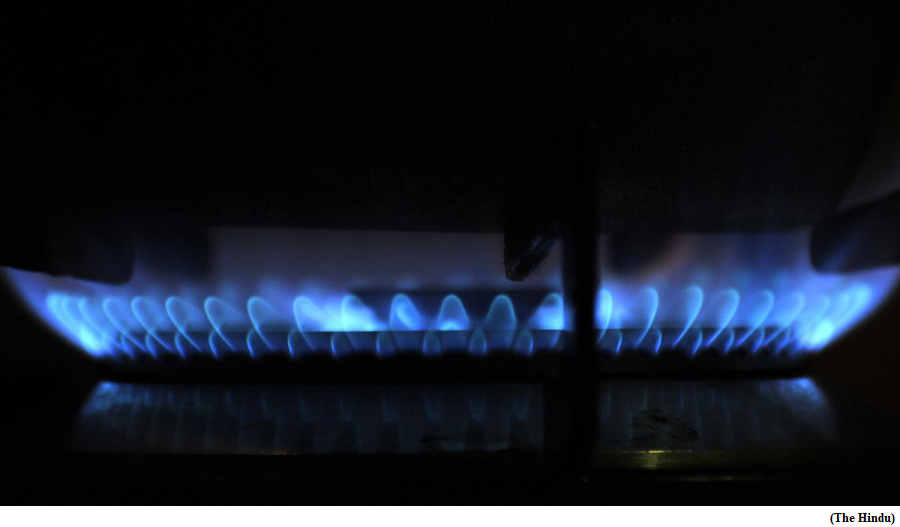Recalibrating India’s clean cooking strategy (GS Paper 3, Environment)

Context:
- In the recent past, the share of Indian households using LPG as the primary cooking fuel had risen to 71% in 2020 from 33% in 2011.
- However, for the first time, LPG consumption in Indian households saw an absolute reduction in FY23 (minus 0.5% versus FY22) after years of steady growth.
Growth of LPG users:
- Over the last 15 years, the Government of India has attempted to replicate the success that liquefied petroleum gas (LPG) adoption has seen in urban households, in poorer and rural households.
- The Grameen Vitrak Yojana, launched in 2009, has helped grow the rural distributor base from 18% to 60% of the total LPG distributor base today.
- The ambitious Pradhan Mantri Ujjwala Yojana (PMUY) has provided more than 9.5 crore new households with LPG connections since 2016.
Challenges:
- In the recent past, the share of Indian households using LPG as the primary cooking fuel had risen to 71% in 2020 from 33% in 2011.
- It was a clear indication that Indian households wanted to adopt clean cooking solutions, and policy could overcome ‘preferences’ and financial barriers.
- However, global events that unfolded since the COVID-19 pandemic and the ensuing loss of livelihoods and income on the one hand and the Russian invasion of Ukraine and the resulting surge and volatility in crude and product prices on the other, have dented even a near-term prospect of universal use of LPG in Indian households.
Subsidy:
- In 2020, with the onset of COVID-19, subsidy for LPG consumption was withdrawn for all consumers.
- Then, in FY21, three free cylinders were provided to all PMUY consumers as part of the Pradhan Mantri Garib Kalyan Yojana.
- This drove the annual refill rates for LPG among PMUY consumers to their highest levels of 4.55 cylinders per active connection (from three to four cylinders in other years). However, of the possible 24 crore free cylinders available for the taking, only 14.1 crore were actually consumed.
- Further, a nominal subsidy of ₹200 per cylinder was reinstated for PMUY consumers in September 2022, and it helped improve refill rates in FY23 (4.09) versus FY22 (3.68).
- These outcomes suggest that despite significant efforts, home delivery and distribution channel issues remain and more budgetary outlay will be needed for subsidies to entice the poor to consume LPG and avail its health benefits.
Dependence on imported LPG:
- Another challenge is that India’s dependence on imported LPG has steadily increased to over 64% in FY23 (versus 46% in the pre-PMUY phase).
- Further, Indian households have seen a near-doubling in LPG prices since May 2020 in nominal terms.
- With volatile international prices, especially since the Russian war against Ukraine, and a domestic budget that relies on petroleum (and its products) taxation significantly, it is unlikely that India can return to earlier subsidy regime.
Diversity in clean cooking:
- In order to resolve this impasse, India’s clean cooking policy must actively pivot towards the adoption of a suite of clean-cooking technologies and shift from an LPG-only strategy.
- For example, electric cooking, including induction cook-tops, can significantly offset the need for flame-based cooking. With near 100% access to electricity connections, rural households can also shift specific cooking needs to electricity.
- A CEEW study finds that even at a high tariff of ₹8 for each unit of electricity, e-cooking would still be cheaper than cooking using LPG at today’s prices.
- In urban areas, nearly 10% of households already use electrical appliances for their cooking needs, and they can seed the bigger transition that we want to realise in rural areas.
Strategy for shift to e-cooking:
- One possible mechanism to nudge the shift to e-cooking could be through telescopically increasing LPG prices beyond a threshold. This could displace LPG in higher-use groups and, in turn, create a demand for new e-cooking technologies and models, and precipitate a bandwagon effect.
- Demand from these early adopters can then spur the domestic manufacturing ecosystem for e-cooking technologies and stem this runaway dependence on imported LPG and crude, and the outflow of precious forex.
- Displacement of ‘chulhas’ by e-cooking would also avoid climate pollutant release.
- With the newly launched carbon market, India can actually monetise these avoided emissions and help finance the capital needed by poorer rural communities to adopt e-cooking.
Way Forward:
- The debate needs to move from LPG subsidy alone to financing and business models that value India’s clean cooking transition for its climate and clean air benefits, through a bouquet of solutions.


